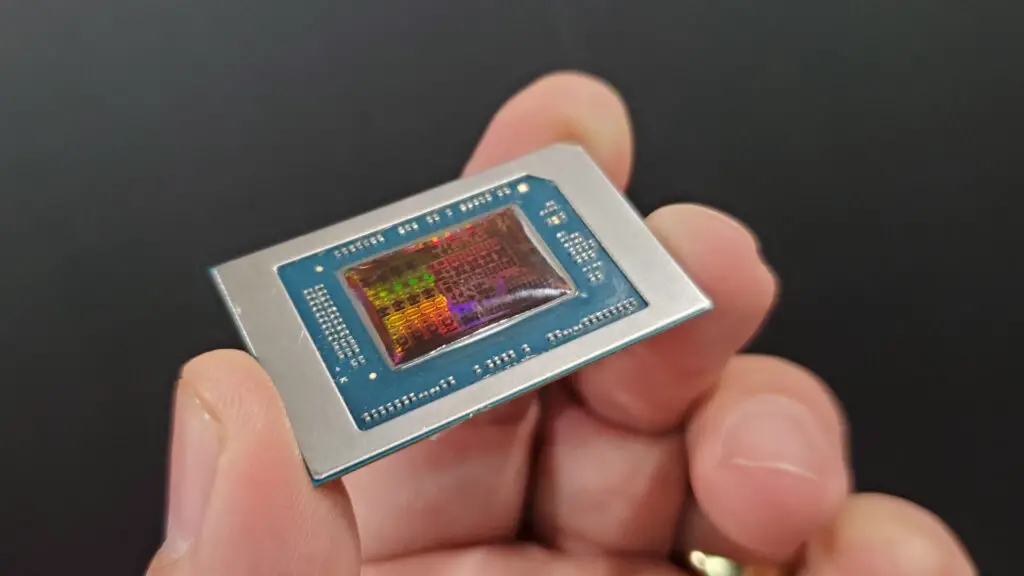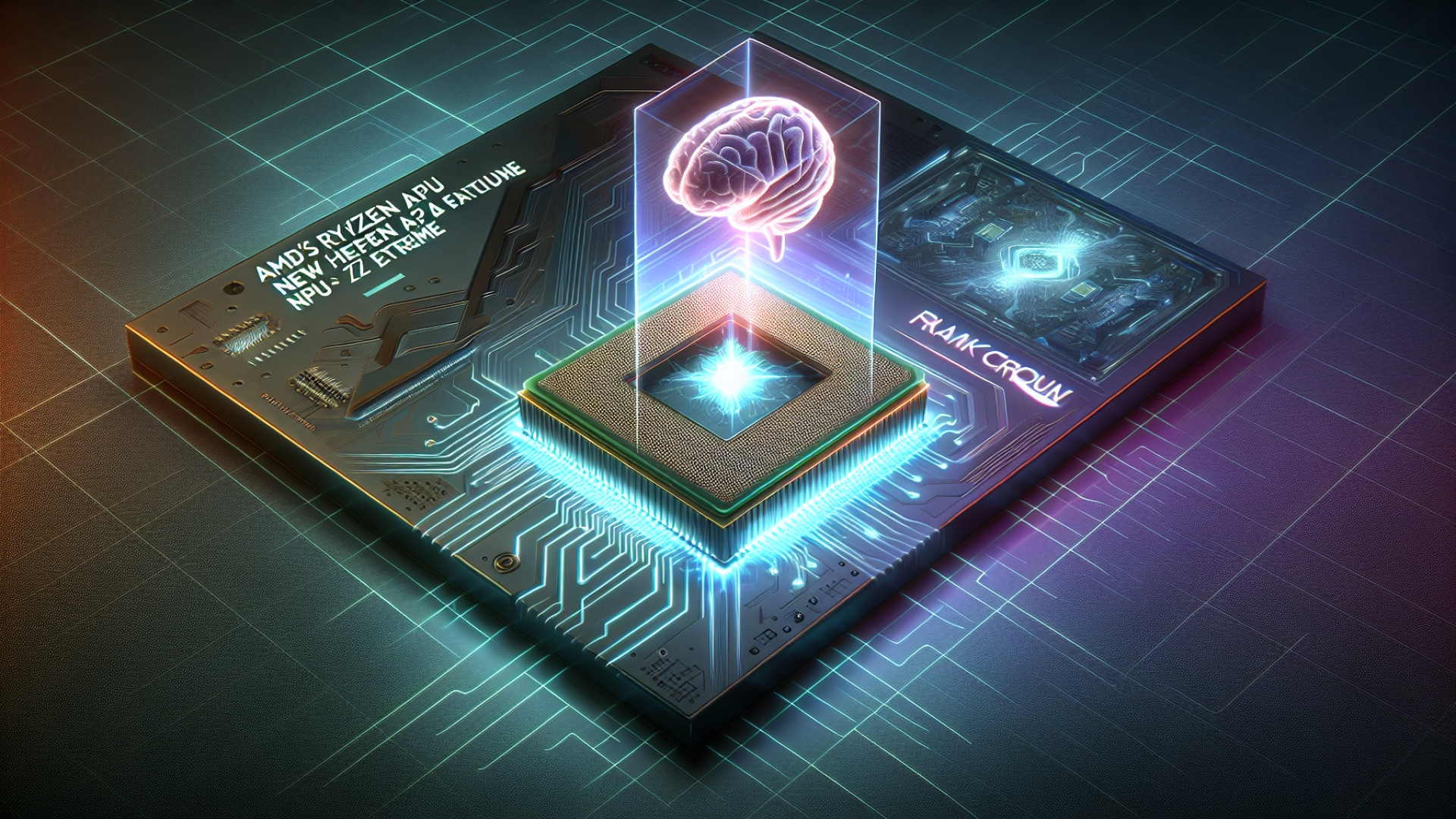Here at Digital Tech Explorer, where we dive deep into the latest tech trends, news has emerged that AMD is reportedly planning to release a new version of its Strix Point APU tailored for handhelds, this time with a fully enabled, AI-accelerating Neural Processing Unit (NPU). This insight comes from X poster Hoang Anh Phu (as reported by VideoCardz). The new model is anticipated to be named the Ryzen AI Z2 Extreme. This immediately sparks a crucial question: What’s the practical benefit of an NPU in a gaming handheld? Let’s explore.
By TechTalesLeo, Digital Tech Explorer

Deep Dive: The Ryzen AI Z2 Extreme and NPU Activation
AMD’s ‘Z’ series chips are essentially versions of its APUs specifically optimized for handheld gaming devices, like the popular Asus ROG Ally X. The ‘Z2’ designation signifies the second generation of these specialized APUs for handhelds. However, the lineup can get quite intricate.
AMD has already unveiled several Z2 APUs. The top-tier Z2 Extreme is built upon AMD’s latest Strix Point APU architecture, featuring the full 16 RDNA 3.5 graphics cores and eight Zen 5 CPU cores. Interestingly, these CPU cores comprise three full-performance Zen 5 cores and five compact Zen 5c cores.
The currently announced Z2 Extreme utilizes the same silicon found in other Strix Point-based APUs, such as the Ryzen AI 9 HX 375, but notably, its NPU is disabled. Consequently, the newly rumored Ryzen AI Z2 Extreme appears to be identical to the existing Z2 Extreme in terms of its eight CPU cores and 16 graphics compute units, with the primary difference being the activation of its NPU.
Understanding AMD’s Diverse Z2 APU Family
The Z2 APU family presents a more complex picture when considering its other members. The other two previously announced Z2 APUs are based on entirely different silicon. The Z2 Go leverages the older Rembrandt APU architecture with Zen 3 cores and RDNA 2-spec graphics. In contrast, the standard Z2 employs the last-generation Hawk Point APU, which offers eight Zen 4 CPU cores and 12 RDNA 3-spec graphics compute units.
This means the Z2 range encompasses three distinct APUs, each hailing from a different architectural generation. To add another layer, the only handheld Digital Tech Explorer has encountered featuring AMD’s Strix Point APU, the OneXPlayer OneXFly F1 Pro, uses the laptop variant of the chip (Ryzen AI 9 HX 370), which already includes an enabled NPU.
| APU Name | Base Silicon | CPU Configuration | Graphics | NPU Status |
|---|---|---|---|---|
| Ryzen AI Z2 Extreme (New) | Strix Point | 8 Zen 5 cores (3 full, 5 compact Zen 5c) | 16 RDNA 3.5 CUs | Enabled |
| Z2 Extreme (Announced) | Strix Point | 8 Zen 5 cores (3 full, 5 compact Zen 5c) | 16 RDNA 3.5 CUs | Disabled |
| Z2 | Hawk Point | 8 Zen 4 cores | 12 RDNA 3 CUs | Typically N/A or disabled |
| Z2 Go | Rembrandt | Zen 3 cores | RDNA 2 Graphics | Typically N/A or disabled |
The Real-World Utility of NPUs in Handheld Gaming
The actual appeal of activating the NPU in the Strix Point silicon for the Ryzen AI Z2 Extreme remains a subject of debate. Enabling the NPU allows handheld devices to be marketed as ‘AI’ capable and could pave the way for support for features like Microsoft’s Copilot+ AI assistant in Windows directly on these portable devices.
However, the tangible benefits for everyday applications are less clear. Many popular AI-powered tools and services, such as ChatGPT, primarily operate via cloud-based infrastructure rather than relying on local device processing.
Furthermore, the current utilization of dedicated NPUs within PC games is minimal to non-existent. On the other hand, since the NPU is already present in the silicon, enabling it might seem like a logical step to unlock its potential, however niche it currently is.
Battery Life: A Key Consideration with Active NPUs
It’s not yet clear what impact an active NPU might have on battery life. While the NPU itself might not be catastrophically power-hungry, high-spec handhelds already grapple with limited mains-free longevity. Powering not just the CPU cores and the GPU, but also an NPU, doesn’t immediately suggest an improvement in all-day battery life, and could potentially reduce it if the NPU is actively used.
Explore Related Hardware Guides on Digital Tech Explorer
Looking to optimize your gaming setup or understand the latest hardware? Digital Tech Explorer offers a wealth of information:
- Discover the latest in Gaming Hardware
- Explore insights on Graphics Cards (GPUs)
- Stay updated with 2024 Tech Releases
- Dive into the world of Artificial Intelligence in Tech
At Digital Tech Explorer, our mission is to help developers and tech enthusiasts stay ahead of trends and make informed decisions. We encourage you to explore our site for more in-depth news, reviews, and coding insights.
All content on Digital Tech Explorer is for informational and entertainment purposes only. Some of the links on Digital Tech Explorer may be affiliate links, meaning we may earn a commission if you click through and make a purchase, at no additional cost to you. Our recommendations are based on thorough research and personal experience.

